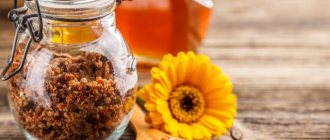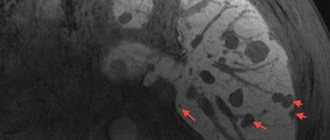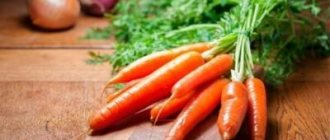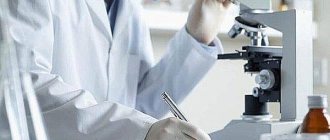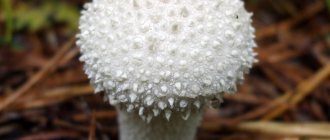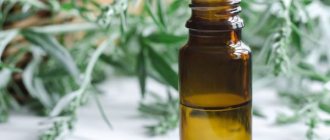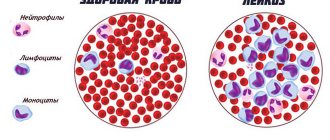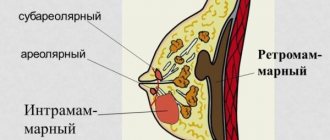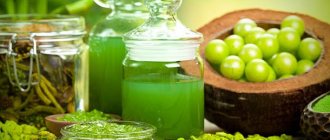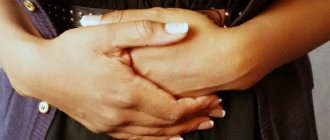Spotted hemlock (wild parsley, whistler, headwort, stinkhorn, angelica) is a poisonous herbaceous biennial plant from the Apiaceae family. Grows in North Africa (Morocco, Algeria, Tunisia), Europe, and Asian regions with temperate climates. In Russia it grows everywhere, found both in Western Siberia and in the warm climatic zones of the Caucasus. It is not at all picky about the soil and growing conditions - on soil rich in nutrients it grows as a large bush, and on poor soils it has a more modest appearance. It is a good melliferous plant, but honey based on the headwort is poisonous.
Features of the plant life cycle
The first year of life is characterized by the formation of a basal rosette of feathery leaves that look similar to parsley. Accidentally eating it by animals and eating it by people instead of parsley can lead to serious poisoning! The fact is that the leaves do not have an unpleasant or bitter taste, which is why they are confused.
In the second year, a hollow, tall stem appears, which is covered with numerous spots (hence the name - spotted). An umbrella inflorescence opens on the stem, the fruits resemble anise and dill seeds.
Sometimes wild parsley is confused with angelica, a medicinal plant that grows in meadows. A characteristic feature of hemlock is its unpleasant, mouse-like odor, especially if the leaf or stem is rubbed in your hands. This smell is emitted by all parts of the plant. Based on the name, hemlocks are sometimes confused with wild rosemary, which is also popularly called hemlock and headwort. However, these are completely different plants and are not interchangeable.
Area of application of hemlock
In pharmacology, due to the numerous contraindications of hemlock, the properties and characteristics of the plant are practically not used. The exception is antitumor drugs in oncology. But in homeopathic and folk medicine, extracts from all parts of the herb are used to treat a wide range of ailments.
Redhead juice is considered useful for:
- lupus erythematosus, erysipelas;
- tuberculosis in all forms;
- venereal diseases;
- thrombophlebitis;
- periodic menstrual pain - for women, the medicinal properties of hemlock (general contraindications) are used mainly to relieve pain;
- gouty inflammations;
- arthrosis;
- epileptic seizures;
- seasonal headaches;
- prostate diseases;
- all types of oncology;
- treatment of hemorrhoids.
All parts of the plant are used to prepare juice, however, for a number of diseases, powder prepared exclusively from hemlock root is taken (the medicinal properties and contraindications of the finished product are considered to meet the general characteristics).
The plant is often taken as an immunostimulant, but the course of treatment must be agreed upon with a homeopath and carried out only with periodic monitoring tests.
Morphological description
The root is spindle-shaped and whitish in color. The stem is branched, thin, with grooves, hollow inside, 60-180 cm high. Sometimes it has a mucous coating, and in the lower part there are reddish-brown spots.
The leaves are arranged alternately. The lower leaves are broadly triangular, trippinnate (similar to parsley), have petioles and reach a length of 30-60 cm. The primary and secondary lobes are located on small petioles, and the lowest ones are sessile. The tertiary lobes are oblong-ovoid in shape. The middle and upper leaves are less complex, small, almost sessile, with a narrow sheath. The terminal lobes of the leaves are pinnately incised or separate, and have an oblong shape.
The flowers are white, small, and five-dimensional. Numerous umbrellas are collected in inflorescences of a corymbose-paniculate appearance. Each inflorescence has 12-20 rays, slightly rough on the inside. The few involucre leaves are characterized by an ovate-lanceolate shape, turned downwards, fused at the bases in 3-5 pieces. Five white petals have a segment curved inward. There are also five stamens, they alternate with petals. The pistil has a bilocular ovary at the bottom, and two columns 1 mm long, which end in stigmas. The subcolumn is short-conical, half as long as the column.
Blooms in summer, June-July. The fruits are ovoid or round in shape and are light brown in color, slightly compressed on the sides, with wavy protruding ribs. They break up into two mericarps, each 3-3.5 mm long. Ripen in August-September.
When is hemlock tincture used?
The scope of application of the tincture is very wide, since hemlock can have antitumor, analgesic, anti-inflammatory, absorbable and antiviral effects on the human body. In particular, hemlock tincture has found wide use in the treatment, therapy and prevention of the following diseases:
- Phlebeurysm;
- Inflammation of the lymph nodes;
- Dermatitis;
- Diseases of the digestive system;
- Constipation;
- Whooping cough;
- Anemia;
- Mastopathy;
- Migraine;
- Menstrual irregularities;
- Nervous overexcitation or exhaustion;
- Oncological diseases;
- High blood pressure;
- Gout;
- Problems of the urinary system;
- Prostatitis;
- Prostate cancer;
- Rheumatism;
- Thrompholebitis;
- Chorea;
- Chronic cough;
- Epilepsy.
Hemlock: a medicinal plant used in folk medicine to prevent common diseases
Plant danger
The toxic component of the plant is alkaloids: coniine and other toxic substances - methylkoniine, coniceine, conhydrin, pseudoconhydrin. They have a nerve-paralytic effect, retain their activity in dried form, and end up in infusions and decoctions. Is the puzzler as dangerous as it is written? Here are some facts:
- during ancient Greece, the plant was used as a poison for executions;
- Socrates' death developed according to the scenario of coniine poisoning: ascending paralysis, numbness starting from the toes and rising higher (death occurs as a result of paralysis of the diaphragm and, accordingly, respiratory arrest). As historians and doctors now describe, in prison the philosopher was given a decoction of hemlock, not hemlock;
- 3 kg of fresh grass plants can kill a cow or horse;
- Cases of severe poisoning by plant alkaloids have been reported in children who made pipes from the stems and blew into them (i.e. contact with the oral mucosa was ensured).
The toxicity of a plant varies throughout the life of the plant: a greater amount of alkaloids in the leaves is detected before flowering, after which the poisons partially pass into the seeds.
This leads to the conclusion that inept handling of the plant can result in resuscitation, so self-medication is unacceptable. Before using medications, you should consult a doctor or herbalist, and only your doctor should find out whether hemlock can be treated in your particular case.
Composition of hemlock
Despite the fact that traditional medicine advises the use of hemlock for oncology, all parts of this plant are very poisonous. The plant contains four poisonous alkaloids: methylkoniine, coniceine, conhydrin, pseudoconhydrin, and it also contains tannins. The most toxic is coniine, which acts on the body in the same way as the well-known curare and nicotine. It is a powerful nerve poison. Medium and small doses of coniine can increase blood pressure and increase heart contractions.
In hemlock fruits you can find essential oil, caffeic acid, carotene (provitamin A), vitamin C, in inflorescences and leaves there are flavonoids, in hemlock stems you will find essential oil, caffeic acid. Small quantities of tannins were found in the juice of the plant.
Harvesting the plant
For therapeutic purposes, the grass, flowers, leaves and fruits of the plant are used, which should be harvested during the flowering period in the summer. When collecting a plant, direct contact of the skin of your hands with its parts should be avoided - pluck only with gloves. You should not taste the plant; you should also exclude the presence of children when collecting.
Raw materials are dried only in ventilated non-residential premises, out of reach of unauthorized persons, children and animals. Dry grass is stored separately from other raw materials, in closed iron cans, with a label indicating what exactly is in the can. It is best to store it in a locker that is locked.
Signs of hemlock poisoning
In case of an overdose or non-compliance with the drug treatment regimen, signs of poisoning occur that cannot be ignored:
- intense salivation;
- severe nausea and vomiting;
- decreased swallowing reflex;
- a state of excitement followed by apathy, convulsive phenomena.
An acute condition that occurs with a single large dose of the drug or hypersensitivity to the components of the drug is recognizable by partial or complete immobility sequentially - first of the legs, and then of the body above the waist.
Medicinal properties and medical uses
Despite its toxicity, wild parsley has long been used in medicine. Alkaloids, in addition to their negative effects, in a certain concentration have a strong analgesic, immunostimulating, hypotensive, antispasmodic, and wound-healing effect. These properties of hemlock allow it to be used for therapeutic purposes.
- Hippocrates, in his treatises, suggested that in minute doses, pineapple juice can be beneficial. Avicenna and Dioscorides used the plant in practice against many ailments.
- In ancient times, in Rus', plant preparations effectively treated epilepsy, syphilis, convulsive cough, panic conditions, tumors and other diseases. In the medical work “The Collection of Svyatoslav Yaroslavich,” which was published in 1074, recipes have already been proposed for treating benign and malignant tumors and venereal diseases with decoction and infusion of hemlock.
- The herb was included in the official pharmacopoeia of Russia until the end of the 19th century (from 1866 to 1902). Now, due to its toxicity, the plant is strictly prohibited for use in official medicine.
- In Russia, plant preparations are regularly studied in experimental laboratories. One of these studies was conducted by Ph.D. Popova E.V. in 2008: during trials, the anti-inflammatory and analgesic effect of plant preparations was proven, comparable to nimesulide. Scientists have proven that a tincture of the plant can stop the development of arthritis. And in experimental animals that received hemlock tincture, life expectancy increased significantly, which allows us to consider the plant as promising in this direction in the human population.
- In European countries, scientific research is being conducted that is aimed at obtaining anti-cancer drugs based on the plant extract. In Spain, Austria, Portugal, Germany, Bulgaria, France, Chile, Mexico and Venezuela, the head is included in the official pharmacopoeia.
Today, hemlock, taking into account its medicinal properties and contraindications, is used in folk medicine for a wide variety of conditions:
- general exhaustion and weakness;
- vascular diseases: atherosclerosis, anemia, hemorrhoids, varicose veins, thrombophlebitis;
- menstrual irregularities: amenorrhea;
- autoimmune pathologies: lupus, rheumatism;
- diseases of bones and metabolism (arthrosis deformans, polyarthritis, gout);
- headaches and migraines, insomnia;
- chronic infectious processes: long-term inflammation of the eyes, syphilis, tuberculosis;
- sexual impotence.
The most well-known uses of hemlock are as an effective pain reliever for various pathologies, and as a drug for the prevention and treatment of benign and malignant tumors: mastopathy, polyps of the bladder, uterus, intestines, skin tumors, prostate adenoma, etc.
According to many herbalists, hemlock against cancer is effective even at stage 4 of the disease, stops the growth of metastases and even eliminates them. However, there is no official confirmation of this information, so experimenting with your health and abandoning traditional treatment in favor of herbal medicine is unacceptable!
Do doctors recommend hemlock treatment for cancer?
The attitude of specialists towards treatment in this traditional way is negative. Although some scientists are experimenting with the use of this type of treatment, it is usually carried out on volunteers.
Hemlock tinctures, which you can buy at the pharmacy: “Bgs 1 60”, “Koniin 60386”, possibly comply with all the rules for making tinctures, as follows from the description in the annotations to them, but if you are not an expert in herbal medicine, then it’s better to don't take any risks. Since the herb used in the preparation of the infusion must be collected at a certain time, the medicine itself must be stored correctly, storage conditions must be observed, and the tincture must have an expiration date. Alcohol is stored no longer than 2-3 years.
Many herbalists have a positive attitude towards the treatment of oncology with hemlock: herbalist Golovkov, Semiletov and others
The famous oncologist and herbalist Korepanov also uses plants in the prevention and treatment of cancer, including hemlock. His book about the treatment and prevention of the disease talks about many recipes based on Altai herbs.
Of course, many plants have been used in folk medicine since ancient times, and many of them, like hemlock, not only treat diseases, but are also poisonous plants - aconite (or fighter), hemlock and many others. It is important to remember that “in small doses it is medicine, but in large doses it is pure poison.”
Preparations with hemlock
In online stores, some pharmacies and specialized stores you can buy drugs based on this plant or in composition with it.
- Conium . A multicomponent drug used in homeopathy, it is used to treat tumors of the lymph nodes (benign and malignant), convulsive conditions, bronchial asthma and a number of other pathologies. However, it contains only traces of hemlock in strong dilutions, so it cannot cause harm.
- Hemlock tincture . Where can I buy? Sold in online stores in Russia (Veresk, Kedroff and others), it is positioned as a natural biostimulant for the treatment of cancer, joint diseases, atherosclerosis, lymphadenitis and other diseases. You can get the tincture yourself.
- Dry grass . It is used for the preparation of various dosage forms; it requires caution and strict dosing according to the instructions.
Use of hemlock herb in folk medicine
In alternative medicine, hemlock is used even for quite serious diseases. For each case, a specific treatment regimen is provided. It is important to observe the dosage and frequency of taking the medication. Usually hemlock tincture is taken internally. For hemorrhoids and gout, the remedy is used transdermally.
Treatment with hemlock according to the “Tsar’s Method” helps against cancer. Herbal medicine is carried out as an addition to the main treatment. It involves activating the body's defenses by introducing a small dosage of poison. This is especially true after chemotherapy. In the fight against cancer, alcohol tincture is used. The main principle is to increase the dosage by 1 drop daily. When it reaches 40 drops, it is necessary to reduce the dosage in the same way. Take it one hour before meals.
Treatment of cysts with hemlock
The medicinal properties of the plant make it possible to use it to eliminate cystic formations on the kidneys. The tincture is used as an additional treatment method. It produces a mild diuretic effect. At the same time, the substances in the herb promote the resorption of the tumor and remove toxins. In total, the treatment course lasts 2-3 months. The dosage is selected individually.
Dried raw materials can be purchased at the pharmacy as part of herbal preparations
Treatment of fibroids with hemlock
Hemlock for women is often prescribed to eliminate diseases of the reproductive system. He does a great job with fibroids. But to achieve the desired result, traditional treatment must be used simultaneously.
The neoplasm is benign in origin and occurs under the influence of hormones. To eliminate it, hemlock tincture is taken orally. 10 drops of medicine are diluted with 2 tbsp. l. water. After a week, the single dosage is increased to 15 drops. The duration of the treatment course is 2 weeks.
Treatment of fibrocystic mastopathy with hemlock
Fibrocystic mastopathy is accompanied by the appearance of neoplasms in the mammary glands. Under unfavorable circumstances, they can transform into a cancerous tumor. Therefore, it is extremely important to eliminate the problem at an early stage.
We recommend reading: Dodder: beneficial properties of the grass, why it is dangerous, photo of the weed
Hemlock tincture helps reduce pain, but medication plays a fundamental role in the effectiveness of treatment. The tincture is taken 5 drops for 3 weeks.
Treatment of the intestines with hemlock for the herpes virus
The herbal tincture has antiviral properties, which makes it effective against herpes in the intestines. It can compete with drugs. But doctors recommend using both methods simultaneously. Drink the tincture 2 times a day, 4 drops, after dissolving them in 50 ml of water. Take before meals.
Hemlock treatment
Traditional medicine uses fresh leaves, water and alcohol infusions, as well as oil and ointment of this herb. A water infusion of hemlock is considered the mildest remedy, and an alcohol infusion is the most active, which is why it is used for radical treatment.
Tincture
Water: 1 tsp. fresh raw materials are poured with 250 ml of boiling water and left in a thermos for 5-6 hours. Store in the refrigerator for 5 days.
Alcohol: Take a glass jar with a volume of 0.5 liters, fill a third with fresh crushed raw materials (or 30 grams of dry grass), fill the top with vodka to the neck, close and leave for 14 days.
Tishchenko's tincture: fresh inflorescences of the plant are placed in a jar up to the top, loosely, filled with vodka and left to infuse for 15 days.
Seed tincture: fresh seeds are placed in a glass container to the top, filled with medical alcohol and kept for 15 days.
How to take hemlock:
- The most common dosage regimen: 2 drops of tincture per 1 tbsp. water, up to 5 times a day before meals. For severe pain caused by intestinal spasms, menstruation, stomach or kidney colic, the dose can be increased to 10 drops.
- To eliminate pain, you can moisten a cotton swab in alcohol tincture and apply it externally to the painful area.
- To activate the immune system, treatment and prevention of tumors, neoplasms, polyps, prostate adenoma, the most common is Tishchenko’s scheme (the “three slides” technique). 1 hour before meals (optimally before breakfast), drink half a glass of clean water with the addition of a certain amount of tincture:
- take 1 drop on day 1, then add 1 drop every day until you reach 13 drops;
after 13 drops they are diluted in 150 ml of water, and after 25 drops, 250 ml of water should be taken;
- when the number of drops reaches 40, both their number and the volume of water are reduced in the reverse order until they reach 1 drop;
- then they start exactly the same course without taking a break, then start the course again, etc.
- Another safe treatment option according to this regimen is to increase the dose to 15 drops and use this dose for 4 months in a row, after which the amount of tincture is gradually reduced.
- The Nikiforov method is a radical method that is used for severe pathologies. The tincture is taken 3 times a day strictly after 6 hours. The number of drops to take at a time: on the 1st day 5, then add 1 drop every day and reach 30 drops, which are taken 3 times a day, then reduce the dose drop by drop until they reach 5 drops.
In general, treatment according to Tishchenko’s scheme takes 8 months. After approximately 25 drops, patients may notice a painful reaction, in which case they should drink hemlock in a minimal dose (up to 15 drops per day) until the symptoms disappear completely.
Fresh leaves
Suitable for external use: they are kneaded and bandaged to joints or seals for 60 minutes. Repeat these procedures 3-4 times a day.
Oil infusion
50 gr. dry herbs are poured into 0.5 liters of vegetable oil and kept in a dark place for 3 weeks.
The second method makes it possible to obtain an even more effective preparation: fresh unripe fruits of the plant are taken as a basis, which are poured into a third of the container, and the rest of the volume is filled with vegetable oil. But before use, such a drug is additionally diluted with oil 1:2.
The oil infusion is suitable for external use for compresses in the treatment of internal tumors (including mastopathy, breast lumps), thrombophlerbitis, joint diseases, all types of tumors with external localization, hemorrhoids.
Powder
It is obtained from dry grass (ground) and taken 0.06 g. morning and evening with sugar. Gradually the dose is increased to 0.6-1 g. appointment). It can also be used externally to treat nasal polyps.
Poultices
Fresh herbs are steamed in boiling water or boiled for 3-5 minutes in milk, then wrapped in gauze and these warm pads are applied to sore joints, hard tumors, bone and gouty growths, and swelling.
Hemlock ointment
To obtain it, take 100 ml of olive oil, 2 tbsp. dry hemlock herb, infuse in a cool place for 14 days. Strain through 8-10 layers of gauze - the first ointment preparation is ready. Heat another 100 ml of vegetable oil over low heat so that it does not boil, but is hot, and throw pieces of wax candle into it, stirring so that the wax dissolves. Wax is added until the oil turns white. When the wax solution has cooled to a warm state, it is mixed with the plant’s oil preparation and left to harden in the refrigerator. Used for all external tumors, blisters, cuts, hemorrhoids, applied to the skin in the area of the projection of a cancerous tumor of an internal organ (if this is the area of the head or neck - contact time is no more than 2 hours).
Tampons
In the treatment of gynecological diseases such as uterine fibroids, cysts, polyps, endometrial hyperplasia, endometriosis, uterine and ovarian cancer, in parallel with the internal administration of the tincture, local treatment is carried out with tampons soaked in the medicinal infusion. To obtain it, take chamomile, sage, calendula, 1 tsp. mixture of herbs is poured with 1 glass of boiling water, left for 30 minutes, filtered. A sterile swab is soaked in the infusion and 2-3 drops of hemlock water tincture are dripped onto it. The tampon is placed at night every day, in parallel with internal treatment.
Cooking recipes and rules of administration
How to prepare raw materials for tincture
The plant is harvested in the summer, during flowering. Medicines are made from leaves, fruits, and flowers of hemlock. The most valuable raw material is the inflorescences that have reached full color. It is advisable to place hemlocks immediately after cutting in a container pre-filled with an alcohol composition so that the ester in the coniine oil does not have time to evaporate.
It is recommended to carry out the harvesting with gloves so that the skin comes into contact with the hemlock as little as possible, however, after collecting and harvesting, you can simply wash your hands thoroughly several times. The raw materials are dried in a non-residential area with good air circulation, where access to animals and children is prohibited.
Dry hemlock is stored in a labeled iron jar, under a tight lid. It is safer to store the workpiece in a secluded place, closed to public access.
Alcohol tinctures
An alcohol-infused potion is made from 2 parts herbs and 1 part medical alcohol or high-quality vodka. The method of using hemlock infusion depends on the type of disease. Renal colic, intestinal spasms, menstrual pain are relieved by drinking 1 glass with 2 drops of tincture five times 0.5 hours before meals.
Other pains can be relieved externally - by simply lubricating the skin in the painful area. For serious chronic diseases (oncology, tuberculosis, benign tumors), a special treatment regimen is being developed.
Every day, the number of drops dissolved in 0.5 glasses of water per dose increases by 1 drop, bringing the amount to 13. On the 14th day, the drops are dissolved in 2/3 glasses, reaching 24 drops per dose.
The next stage is from day 25 to dissolve the droplets, take 1 glass, gradually increasing the dosage. When 40 drops are reached, the dosage is gradually reduced in the reverse order, returning to 1 drop.
Why hemlock helps treat cancer
A poisonous plant works according to the homeopathic principle: like cures like. The human body perceives alkaloids as foreign substances, similar to cancer cells and infectious agents, and begins to activate all its reserves, trying to get rid of the poison. Immune cells simultaneously begin to destroy tumor cells, their own altered cells (in autoimmune diseases), viruses and bacteria, which leads to recovery. The most important thing is treatment in small doses, to which the body gradually adapts.
However, this is a theory that does not yet have official scientific confirmation. This should be understood by all patients who decide to take hemlock.
Features of hemlock treatment and warnings
During the entire treatment period, dairy products and sour foods should be excluded from the diet. Since plant preparations contain alkaloids, the likelihood of side effects is very high.
Everyone has their own sensitivity to alkaloids. But it is very important to know the warning signs of poisoning, which require immediate cancellation of treatment and emergency consultation with a doctor: the appearance of nausea, drooling, headache, dizziness, breathing problems, weakness in the legs, and ascending numbness. First, there is excitation of the central nervous system, and then depression. Before the ambulance arrives, you need to drink a large amount of warm water sweetened with honey and induce vomiting, then take activated charcoal and wash it down with a large amount of milk with the addition of potassium permanganate (until a pinkish color). You should not hesitate to seek medical help, since the clinical picture develops quickly and artificial ventilation may be required.
Contraindications to hemlock
Before performing herbal medicine, it is important to consider contraindications. This will provide protection against side effects. The properties of the herb do not manifest themselves in the best way in the following cases:
- anemia;
- being in an exhausted state;
- frequent changes in blood pressure;
- individual intolerance;
- heart failure;
- kidney disease;
- liver dysfunction.
We recommend reading: Erythronium (kandyk): medicinal properties, contraindications
Treatment and prevention for other diseases
Important! When taking hemlock, strictly follow precautions. Do not confuse the dose of the drug, do not dry the collected parts of the plant indoors. Remember that this is a poisonous plant that, if used incorrectly, can cause more harm than good.
For medicinal purposes, a ten percent hemlock tincture is used. Ten drops of aged alcohol tincture are dissolved in 100 g of water.
- For constipation, drink the tincture twice a day. Morning and evening on an empty stomach. Bowel movements return to normal after a few weeks.
- For pain in the stomach, kidneys, liver, intestinal colic, cramps, take a ten percent hemlock infusion twice a day, which relieves spasms.
- For benign tumors, migraines, and epilepsy, hemlock solution is used to relieve inflammation, reduce pain and cramps.
The scope of hemlock is as wide as this plant is dangerous if used incorrectly. Therefore, limiting ourselves to the above recipes, we advise you to consult with an experienced specialist when starting treatment. Hemlock is not recognized by traditional medicine. Recently, herbal treatment has become increasingly recognized. Advice on the use of a particular drug can now be obtained not only at an appointment with witch doctors and healers, but also at a herbal pharmacy with a medical professional.
Treatment methods for certain diseases
When starting treatment for any disease, you should follow the recommendations and first conduct test checks on a small area of skin to exclude the possibility of allergies.
Compresses and applications for joint and skin diseases
Hemlock leaves are placed in a gauze napkin. Roll up the gauze and pour boiling water over it. After some time, after waiting for a temperature that is tolerable for the skin, it is placed on the affected area and fixed. It is advisable to change the compress every 6 hours per day. This treatment is continued for an average of 2 months.
Soak cotton wool in the evening with an aqueous infusion of hemlock and distribute it over the area requiring treatment. Cover with cellophane and a warm scarf. Remove the compress in the morning. In addition to the infusion, hemlock oil, which is used to soak a gauze or cotton pad, has a good effect.
Hemlock infusion or ointment is used for applications. They are especially effective in treating poorly healing wounds and blisters. Apply a sterile cloth soaked with these drugs every day for 2 hours.
Treatment of hemorrhoids
To relieve pain and gradually eliminate inflammation, apply cotton wool soaked in hemlock tincture to the hemorrhoids for 3 minutes. If bleeding is a concern, then tampons with hemlock oil are inserted into the anus at night. You can soak them in an aqueous infusion of this plant.
Ingestion
It is important to know how to take hemlock in the treatment of hypertension, atherosclerosis or thrombophlebitis. Use the tincture by diluting 2 drops in water (a tablespoon)
Drink three times a day on an empty stomach. The course duration is 3 months.
Restoration of the menstrual cycle
If the cause of the menstrual cycle is not menopause or pregnancy, then drink the tincture three times a day for a month. To do this, the product (2 drops) is diluted in water (a tablespoon).
Relief from pain
To get an analgesic effect, drink 2 drops of tincture, dissolved in a tablespoon of water, before meals 5 times a day. To relieve severe attacks of pain, dilute 10 drops of tincture in 50 ml of purified water.
Cancer treatment
The most famous is Tishchenko’s method, which prescribes how to drink hemlock with gradual addiction to it. Take the tincture an hour before meals, in the morning on an empty stomach. The scheme is simple and does not require effort to remember.
When practicing the treatment of cancer with hemlock, on the first day they use just a drop of the remedy, dissolved in water (100 ml). Daily increase the dose of tincture by 1 drop until you reach 40 drops. This is then followed by a daily reduction in dosage according to the same principle from 40 to 1.
When taking hemlock for oncology, the amount of water is increased and then decreased. In this case, 14 drops of tincture require 250 ml. water, with 26 drops (maximum value) - 300 ml. For complete recovery, 2–3 treatment courses are necessary.
